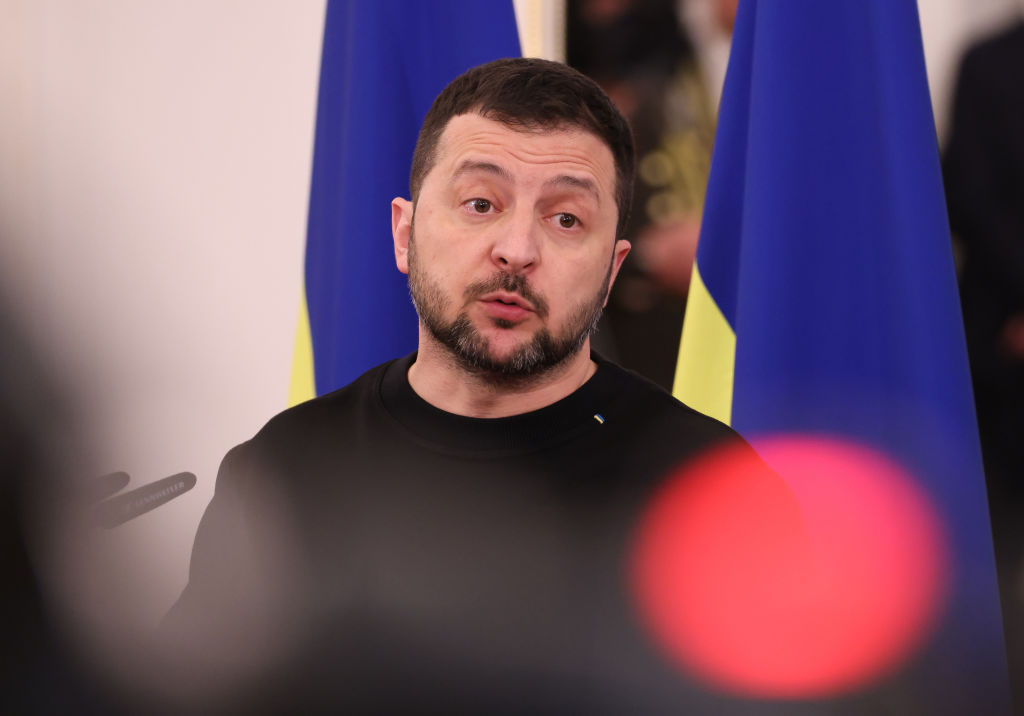
In early January, Ukrainian drones blew up a gas terminal near St. Petersburg. In December, Ukrainian operatives even managed to set off explosives on Russian railway lines deep in Siberia, hundreds of miles from the war. We’ll see more of these attacks inside Russia as fear rises in Kyiv that Ukraine is running out of ways to put Russian forces on the back foot on the battlefield.
The attacks are more a sign of Ukraine’s fears than of its strength. After hundreds of thousands of casualties and the displacement of millions of people, President Volodymyr Zelensky and his generals have new reasons to doubt the staying power of the Western support on which a Ukrainian victory, in any form, will depend. Aware that voters in America, its key military ally, and Europe, both a military and financial backer, are increasingly conflicted about whether Ukraine can ever evict Russian invaders from their trenches and recapture the 18% of territory they occupy, Kyiv is rightly worried.
Even if Congress approves more military aid for 2024, this will probably be the last package from Washington until after the November election. If Donald Trump wins, Ukrainians know he will drastically cut aid. The outlook in Europe is only slightly better. German budgetary problems, growing Hungarian opposition, and a lack of E.U. leadership will make it hard to fill the gap in military help from Washington over the medium term.
Read More: Inside Ukraine's Plan to Arm Itself
In the meantime, as Vladimir Putin shifts Russia’s economy onto a war footing, Ukraine knows it must mobilize and train hundreds of thousands of new recruits. Kyiv is considering mobilizing 500,000 additional troops. Even if that proves possible, it isn’t sustainable in a war against an invader with a much bigger population and economy. That’s why Kyiv is fast becoming more desperate. It’s doing its best to scale up its domestic defense production, especially of drones for the battlefield and for hitting targets inside Russia.
That’s where the danger grows for those not directly involved in the war. Zelensky is already taking bigger risks to turn the war around and maintain his political standing at home, including more aggressive attacks against targets inside Russia and occupied areas of Ukraine. It means a higher likelihood of targeted killings of Russian officials connected to the war, and frequent strikes with drones and missiles in Crimea and on Russian military and economic infrastructure, possibly including oil and grain facilities on the Black Sea that could again disrupt global markets. New attacks are also likely on the Kerch Strait bridge, which links Crimea to the Russian mainland. That, in turn, would provoke more intensive Russian attacks against Ukrainian cities. Any of these attacks—and there are many possible targets—risks a retaliation from Putin that brings NATO more directly into the conflict. Neither Russia nor NATO wants that expansion, but wars take on a life of their own, particularly with one of the key players—in this case, Zelensky—becoming a wild card to watch.
More From TIME
More Must-Reads From TIME
- The 100 Most Influential People of 2024
- Coco Gauff Is Playing for Herself Now
- Scenes From Pro-Palestinian Encampments Across U.S. Universities
- 6 Compliments That Land Every Time
- If You're Dating Right Now , You're Brave: Column
- The AI That Could Heal a Divided Internet
- Fallout Is a Brilliant Model for the Future of Video Game Adaptations
- Want Weekly Recs on What to Watch, Read, and More? Sign Up for Worth Your Time
Contact us at letters@time.com